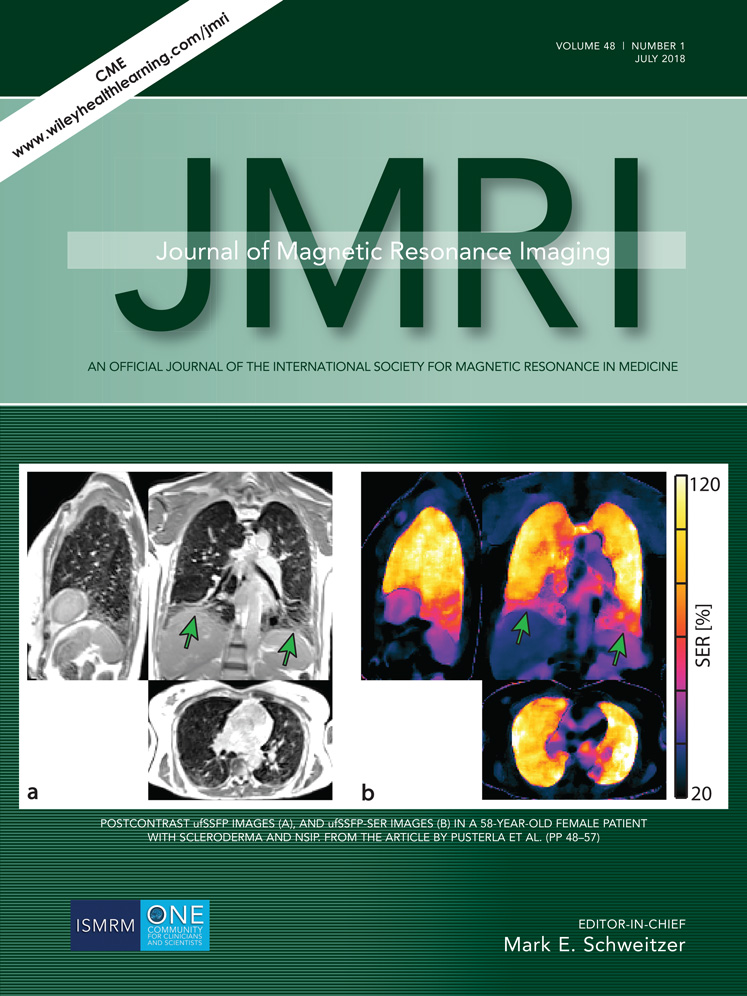Quantitative Flow Imaging in Human Umbilical Vessels In Utero Using Nongated 2D Phase Contrast MRI
Abstract
Background
Volumetric assessment of afferent blood flow rate provides a measure of global organ perfusion. Phase-contrast magnetic resonance imaging (PCMRI) is a reliable tool for volumetric flow quantification, but given the challenges with motion and lack of physiologic gating signal, such studies, in vivo on the human placenta, are scant.
Purpose
To evaluate and apply a nongated (ng) PCMRI technique for quantifying blood flow rates in utero in umbilical vessels.
Study Type
Prospective study design.
Study Population
Twenty-four pregnant women with median gestational age (GA) 30 4/7 weeks and interquartile range (IQR) 8 1/7 weeks.
Field Strength/Sequence
All scans were performed on a 3.0T Siemens Verio system using the ng-PCMRI technique.
Assessment
The GA-dependent increase in umbilical vein (UV) and arterial (UA) flow was compared to previously published values. Systematic error to be expected from ng-PCMRI, in the context of pulsatile UA flow and partial voluming, was studied through Monte-Carlo simulations, as a function of resolution and number of averages.
Statistical Tests
Correlation between the UA and UV was evaluated using a generalized linear model.
Results
Simulations showed that ng-PCMRI measurement variance reduced by increasing the number of averages. For vessels on the order of 2 voxels in radius, partial voluming led to 10% underestimation in the flow. In fetuses, the average flow rates in UAs and UV were measured to be 203 ± 80 ml/min and 232 ± 92 ml/min and the normalized average flow rates were 140 ± 59 ml/min/kg and 155 ± 57 ml/min/kg, respectively. Excellent correlation was found between the total arterial flow vs. corresponding venous flow, with a slope of 1.08 (P = 0.036).
Data Conclusion
Ng-PCMRI can provide accurate volumetric flow measurements in utero in the human umbilical vessels. Care needs to be taken to ensure sufficiently high-resolution data are acquired to minimize partial voluming-related errors.
Level of Evidence: 2
Technical Efficacy Stage 1
J. Magn. Reson. Imaging 2017.




